Giving animals, trees and rivers legal rights is no longer a fringe idea. The Law Society, the professional body for solicitors in England and Wales, has produced a report that says that granting legal rights and protections to non-human entities such as animals, trees and rivers is critical if nations are to confront climate collapse and the collapse of habitat and biodiversity.
The report is called Law in the Emerging Bio Age. The title indicates the big shift in thinking when it comes to humanity’s view of our place in our environment alongside other creatures. The idea that we live in the “bio age” is correct. Humans can no longer rely on the conceptual framework of the Western Christian tradition, in which we are outside nature and have dominion over nature. This attitude has brought us to the brink of the extinction of our species. It has destroyed whole species in the great age of extinction caused by pollution and human activity.
It’s time to move beyond the destructive power of exploitative traditions that inform our law and our societies. We can look to societies and nations that are informed by indigenous traditions for inspiration. Ecuador for example, has enshrined legal rights for the natural world, based on the tradition of respecting the earth mother goddess, Pachamama. Bolivia has also granted rights to nature. New Zealand has granted personhood to a former National Park, Te Urewara Park, the Whanganui river and Mt Taranaki.
In the West, in certain countries and states, the law has started to consider that animals should be defined as people rather than property in divorce cases.
These changes represent promising new seeds, but more has to be done to protect the vast swathes of the earth and its creatures that are vulnerable to human exploitation. It is time to accept that we live in the “bio age,” and time to build a new legal and political framework to legislate for our connectedness to natural and animal life.
Read More:
https://vjel.vermontlaw.edu/rights-nature-movement-closer-look-new-zealand#:~:text=Rather%20than%20incorporate%20a%20rights,Taranaki.
https://www.theguardian.com/environment/2022/oct/10/give-legal-rights-to-animals-trees-and-rivers-say-experts
There are times when a death toll goes so high that the significance of numbers is nothing but the complete loss of their significance. No longer are numbers able to speak of the loss of the individual to a community, to a family, to a habitat. The only thing they are able to speak of is the loss of meaning, the incalculable damage done to life itself. When we hear of a human death toll – a disaster, a massacre — the number of dead hits us like a blow to our sense of individual destiny: the right we think we have to thrive, to matter. The dead are like a wave that sweeps across our consciousness, constantly overwhelming our efforts at recognition, at the distinction we humans find between ourselves and others, our environment. We are connected with others in our helpless masses, no longer as helpers or community members, but as mere victims. The numbers stand while we fall, unable to resist the magnitude, the amplitude of the loss.
The numbers of estimated animal dead in Australia cannot be compared to a human village, nor a town, nor even a nation. Instead, the numbers of estimated animal dead in Australia’s fires make up one eighth of the world’s human population today. This animal death toll doesn’t even include frogs and insects.
As humans, we work among the ruins of our own disasters to regain our personal significance. We cling on to activity: gestures of solidarity, statements about change that are as much made to feed the ego as to stake out a real commitment. We reassure ourselves that we are individuals, that we matter. In the wake of Australia’s fires, humans feeding baby koalas and wrapping them in blankets are broadcast as a signal of activity that fills the void of disaster. They speak of our ability to care, to matter, as helpers and agents for animals. Despite the great good of these activities, they do not speak of the loss and grief of animals themselves, nor of their situation as displaced individuals and families who have been devastated by Australia’s inadequate climate change policy.
The animals who have survived have lost their family members and in some cases their entire habitats or livelihoods. The best known example is the Koala, which has been decimated by the fires on Kangaroo island. These koalas had represented a sanctuary and a reserve, protected from the chlamydia that has kept other koalas from reproducing successfully. There are questions over whether a small marsupial which lives its life shielded from danger in greenery has any real shot of sustainable existence in its hollowed out home on Kangaroo island.
We humans imagine death from fire as striking these animals with explosive might, but before the fires, animals were already dying of exposure to intense heat. Birds were dropping out of trees. Animals were starving because their food supplies were drying to a crisp. The fires that have grabbed human attention have left animals homeless. Those who have survived and haven’t received medical attention are enduring great suffering from hunger and injury. The Australia fires have unearthed a world of animals who carry on their lives whether we notice or care or not.
We need to follow the story of animal lives beyond this crisis as they now evade opportunistic predators like feral cats, as livestock dead create bio-hazards for animals, as they move about and use their ingenuity to survive but often fail to make it. Animals, like humans, do what they can to survive, including sheltering together in wallaby burrows. Heroic working dogs have rescued animals from fires. The sight of injured animals, baby koalas clutching stuffed animals, should remind us that other species have their own emotional needs and communities. Everyday animal lives, not human heroism, are the ignored clues to helping animals and working alongside them. For example, it should have been clear by damage from the heat wave in Australia, and by animal behavior, that climate change disaster was already preying upon the animal population. The fear is that California “will be next.” The sovereignty of animal lives needs to be consistently observed and recognized outside of disaster scenarios. Waking up to animal sovereignty, animal pain, animal solidarity can transform the death of animals from a number into an accountability for the loss.
The rescue efforts are not going to stop when the fires start to disappear from the headlines. This article has some information on how to support the rescue efforts going on: https://www.cnet.com/how-to/australia-fires-have-killed-more-than-a-billion-animals-so-far-how-you-can-help/ However, ongoing donations to animal conservation organizations such as the World Wildlife Federation are needed indefinitely. Commitments to fight climate change and move away from animal exploitation and death are needed Right Now.
https://www.latimes.com/environment/story/2020-01-14/australia-fires-killed-millions-of-animals-kangaroo-island
https://www.cnet.com/how-to/australia-fires-have-killed-more-than-a-billion-animals-so-far-how-you-can-help/
https://www.nbcnews.com/science/environment/more-1-billion-animals-killed-australian-wildfires-n1112326


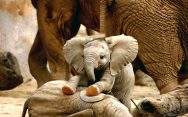
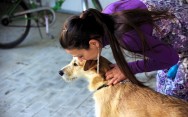

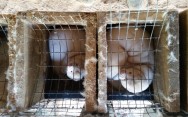
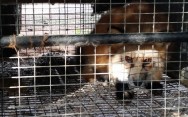
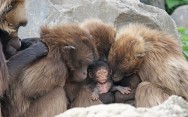
Social Media